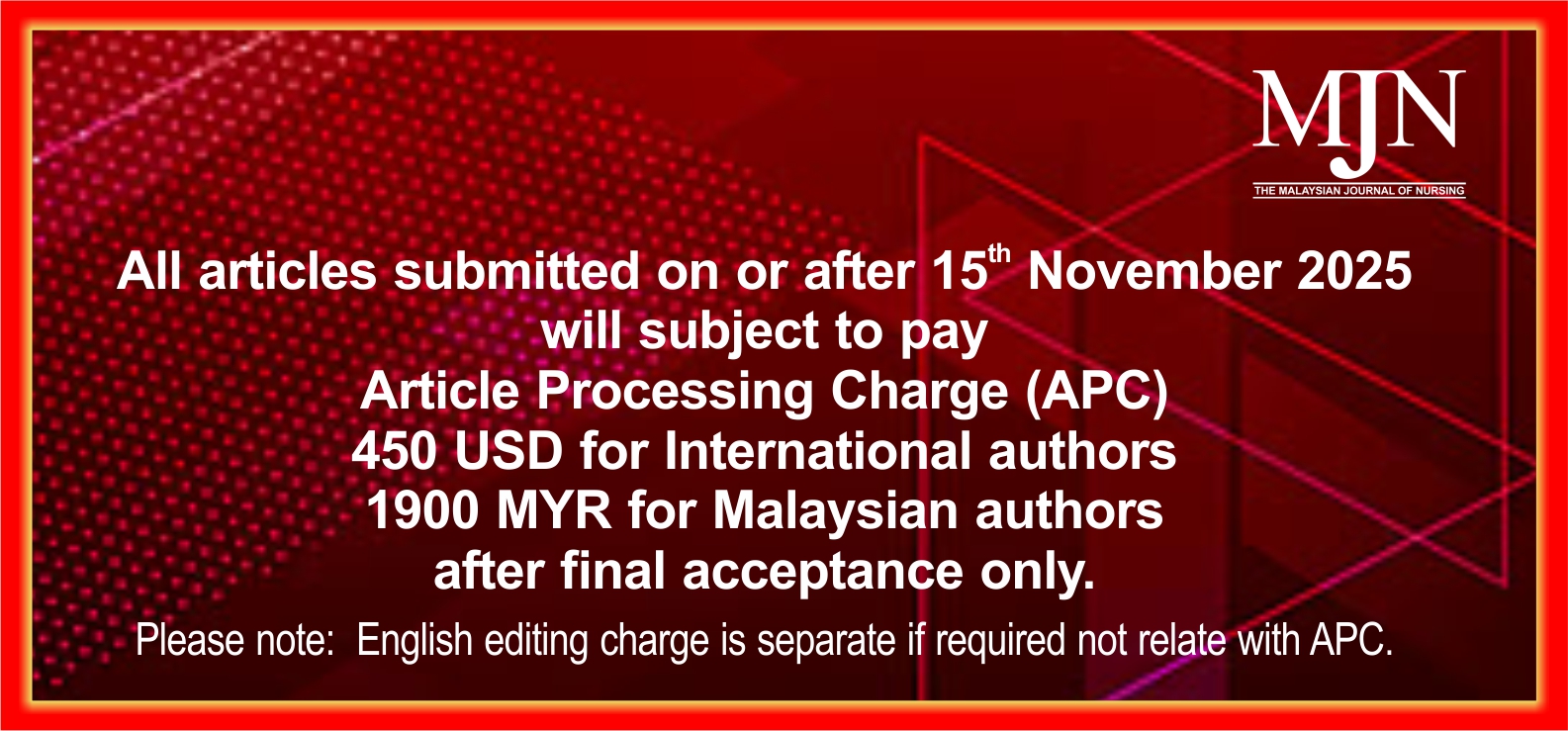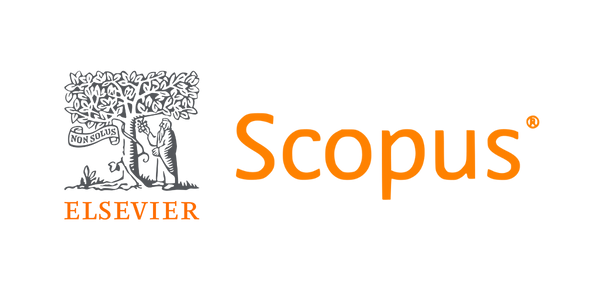Effect of Health Educational Package on Reducing Postpartum Discomforts
DOI:
https://doi.org/10.31674/mjn.2024.v16i02.017Abstract
Background: One of the most important maternal health care services to prevent impairment and incapacity after childbirth is postnatal care. The aim of this study was to assess the effect of health educational packages on reducing postpartum discomforts. Methods: This study used a quasi-experimental pre- and post-test one-group design. A convenient sample of a total of 110 postpartum mothers were attending the postpartum ward at Sohag University Hospital. Three tools were used to collect the data: a structured interviewing schedule, a pre- and post-test on maternal knowledge regarding minor discomforts, and a follow-up tool for postpartum minor discomforts. Results: The postpartum women's mean age was 22.97±2.856 years. The study revealed that 86.4% of postpartum women were housewives, 72.7% lived in rural areas, and 43.6% had completed secondary education. Sixty-six-point four percent of the postpartum women stated that prior to receiving health education, they had an unsatisfactory level of knowledge regarding postpartum minor discomforts. After the teaching, only 0.9% of postpartum women were unaware of these minor discomforts. Conclusion: The health education package improved the women's knowledge of postpartum discomforts. There was also partial relief from afterpain, episiotomy pain, breast engorgement, constipation, and urinary retention. Recommendations: Before discharge from the hospital, postpartum primiparous mothers should receive health education materials that clearly and comprehensively explain postpartum minor discomforts.
Keywords:
Discomforts, Health Educational Package, PostpartumDownloads
References
Abalos, E., Sguassero, Y., & Gyte, G. M. (2021). Paracetamol/acetaminophen (single administration) for perineal pain in the early postpartum period. Cochrane Database of Systematic Reviews, 1. https://doi.org/10.1002/14651858.CD008407.pub3
Abd Elhady, R. M., Abd Elmordy, Z. R., Ali, H. H., Abd Elhakam, E. M., & Emara, H. A. E. (2020). Effectiveness of Interactive Digital Health Media Based on ADDIE Model on Women's Postpartum Minor Discomforts. International Journal of Pharmaceutical Research, 12(3), 3912- 3924. https://doi.org/10.31838/ijpr/2020.12.03.516
Abd El-Salam, A., & Ashour, E. (2020). Effectiveness of video assisted teaching program on postpartum minor discomforts of primipara mothers. American Journal of Nursing Research, 8(2), 142-50. http://dx.doi.org/10.12691/ajnr-8-2-2
Abdelhakim, A. M., Eldesouky, E., Elmagd, I. A., Mohammed, A., Farag, E. A., Mohammed, A. E., ... & Abdel-Latif, A. A. (2020). Antenatal perineal massage benefits in reducing perineal trauma and postpartum morbidities: a systematic review and meta-analysis of randomized controlled trials. International Urogynecology Journal, 31, 1735-1745. https://doi.org/10.1007/s00192-020-04302-8
Ali AL-Shamandy, S. A., Ayad, M. N., Mousa, S. R., & Abdelnaem, S. A. (2023). Effectiveness of Health Education Program on Women’s Knowledge and Self-reported Practice Regarding Postpartum Minor Discomforts. Minia Scientific Nursing Journal, 14(1), 98-106. https://dx.doi.org/10.21608/msnj.2023.251323.1090
Ari, E. S., Sotunsa, J. O., Leslie, T. A., Inuwa Ari, S., & Kumzhi, P. R. (2019). Impact of an educational intervention on postpartum perineal wound care among antenatal mothers in Jos: A quasi-experimental study. Clinical Practice, 16(6), 1409-1422. https://doi.org/10.4172/clinical-practice.1000409
Baishya, D., & Devi, S. N. (2021). A study to assess the effectiveness of selected nursing interventions on reduction of after birth pain among postnatal mothers in a selected hospital, Guwahati, Assam. International Journal of Science and Research (IJSR), 10(3), 1130-1133. https://paper.researchbib.com/view/paper/288135 . Accessed on 29th December, 2023
Binti Ab Latif, R. (2018). Prevalence of Depression, Anxiety and Stress Among Post-Natal Mothers Having Low Birth Weight (Lbw) Infants. Malaysian Journal of Medical Research (MJMR), 2(2), 18-29. https://doi.org/10.31674/mjmr.2018.v02i02.004
Chen, Z., Wang, L., & Chen, J. (2020). The Application of Online Consultant Mode in Postpartum Maternity and Infant at Home in COVID-19 Pandemic. American Journal of Nursing, 9(4), 236-239. https://doi.org/10.11648/j.ajns.20200904.21
Danasu, R., & Praimathi, A. (2016). A study to assess the effectiveness of nursing care on reduction of after pains among postnatal mothers in smvmch at kalitheerthalkuppam, puducherry. International Journal of Information Research and Review, 3(10), 2852-2855. http://ijirr.com/sites/default/files/issues-pdf/1331.pdf . Accessed on 22nd January, 2024.
Deussen, A. R., Ashwood, P., Martis, R., Stewart, F., & Grzeskowiak, L. E. (2020). Relief of pain due to uterine cramping/involution after birth. Cochrane Database of Systematic Reviews, (10). https://doi.org/10.1002/14651858.CD004908.pub3
Di, X., Ge, X. L., & Wang, D. (2024). Effect of care intervention with a health education form for breastfeeding on breast distension, pain, and lactation in postpartum mothers. World Journal of Clinical Cases, 12(22). https://doi.org/10.12998/wjcc.v12.i22.5059
Doha, M., Begum, M., Sultana, M., & Rahman, T. (2020). study on knowledge about postnatal care among mothers in selected urban communities. Journal of ZH Sikder Women’s Medical College, 2(2), 24-27. http://dx.doi.org/10.47648/zhswmcj.2020.v0202.05
Elsebeiy, F. (2019). Assessment of knowledge regarding postnatal minor discomforts and self-care activities among nulliparous women: suggested guidelines. Mansoura Nursing Journal, 6(2), 167-181. https://doi.org/10.21608/mnj.2019.176391
Evcili, F., & Kaya, D. (2019). The effect of postpartum afterpain on breastfeeding self-efficacy. Cukurova Medical Journal, 44, 296-307. https://doi.10.17826/cumj.559442
Gohar, I. E., & Taman, A. H. S. (2022). Effect of Acupressure Applied to Bl23 Point versus Crushed Ice Application on Postpartum Perineal Pain Intensity. Assiut Scientific Nursing Journal, 10(29), 1-13. https://dx.doi.org/10.21608/asnj.2022.119189.1313
Jayanti, N. D., & Mayasari, S. I. (2022). Asuhan Komplementer Tatalaksana Afterpain pada Ibu Postpartum: Literature Review. Jurnal MID-Z (Midwivery Zigot) Jurnal Ilmiah Kebidanan, 5(1), 22-28. https://doi.org/10.56013/jurnalmidz.v5i1.1369
Kim, H. J., An, J. W., Lee, Y., & Shin, Y. S. (2020). The effects of cryotherapy on perineal pain after childbirth: A systematic review and meta-analysis. Midwifery, 89. https://doi.org/10.1016/j.midw.2020.102788
Kumari, M. J., Vahitha, S., & Kubera, N. S. (2024). Effectiveness of video-assisted teaching on prevention of constipation among postpartum women admitted in postnatal ward at a tertiary care hospital: A randomised controlled trial. BMJ Nutrition Prevention & Health, e000605. https://doi.org/10.1136/bmjnph-2022-000605
Lauterbach, R., Sokolovski, C. F., Rozenberg, J., & Weissman, A. (2018). Acupuncture for the treatment of post-partum urinary retention. European Journal of Obstetrics & Gynecology and Reproductive Biology, 223, 35-38. https://doi.org/10.1016/j.ejogrb.2018.01.029
Lazarus, L. M., Chan, C. M., Ramoo, V., bin Mat, A. N. A., Chinna, K., Li, L. F., & Mohajer, S. (2022). The Effects of Structured Self-Perineal Care Education on Episiotomy Pain Score and Wound Healing Outcome among Primigravida Mothers in Malaysia Urban Area. Iranian Red Crescent Medical Journal, 24(10), e2130. https://doi.org/10.32592/ircmj.2022.24.10.2130
Mangesi, L., & Zakarija‐Grkovic, I. (2016). Treatments for breast engorgement during lactation. Cochrane Database of Systematic Reviews, 6. https://doi.org/10.1002/14651858.CD006946.pub3
McCauley, H., Lowe, K., Furtado, N., Mangiaterra, V., & van den Broek, N. (2022). Essential components of postnatal care–a systematic literature review and development of signal functions to guide monitoring and evaluation. BMC Pregnancy and Childbirth, 22(1), 448. https://doi.org/10.1186/s12884-022-04752-6
Öz, T., & Güloğlu, Z. E. (2024). Evaluation of education and counseling using social media tools after discharge in women who underwent episiotomy. Health Care for Women International, 45(8), 910-928. https://doi.org/10.1080/07399332.2023.2243259
Rai, S. K., Oberoi, S., Balgir, R. S., Ahir, D., & Singh, H. (2023). Assessing the utilization of postnatal services among mothers: A cross-sectional study. Cureus, 15(10). https://doi.org/10.7759/cureus.47000
Sendas, M. V., & Freitas, M. J. (2024). The needs of women in the postpartum period: A scoping review. Midwifery, 136. https://doi.org/10.1016/j.midw.2024.104098
Shabaan, H. T. E. A., El Sayed, Y. A., & Ghonemy, G. (2018). Effect of health teaching on postpartum minor discomfort. Beni-Suef University Journal of Basic and Applied Sciences, 7(2), 198-203. https://doi.org/10.1016/j.bjbas.2017.10.004
Shaban, M. H., & Elhendawi, A. (2018). Building Information Modeling in Syria: Obstacles and requirements for implementation. International Journal of BIM and Engineering Science, 1(1), 42-64. http://dx.doi.org/10.54216/IJBES.010103
Raj, K. S., Rajan, R., & Kj, S. (2018). Incidence of minor ailments of puerperium and related knowledge among postnatal mothers. Asian Journal of Pharmaceutical and Clinical Research, 11(1), 261-263. https://doi.org/10.22159/ajpcr.2018.v11i1.21022
Stratton, S. J. (2019). Quasi-experimental design (pre-test and post-test studies) in prehospital and disaster research. Prehospital and Disaster Medicine, 34(6), 573-574. https://doi.org/10.1017/S1049023X19005053
Wuytack, F., Smith, V., & Cleary, B. J. (2021). Oral non‐steroidal anti‐inflammatory drugs (single dose) for perineal pain in the early postpartum period. Cochrane Database of Systematic Reviews, (1). https://doi.org/10.1002/14651858.CD011352.pub2
Zengin, H., Bafali, I., Caka, S., Tiryaki, O., & Cinar, N. (2020). Childbirth and postpartum period fear and the related factors in pregnancy. Journal of The College of Physicians and Surgeons Pakistan, 30(2),144-148. https://doi.org/10.29271/jcpsp.2020.02.144
Published
How to Cite
Issue
Section
License
Copyright (c) 2024 The Malaysian Journal of Nursing (MJN)

This work is licensed under a Creative Commons Attribution-NonCommercial-NoDerivatives 4.0 International License.



































